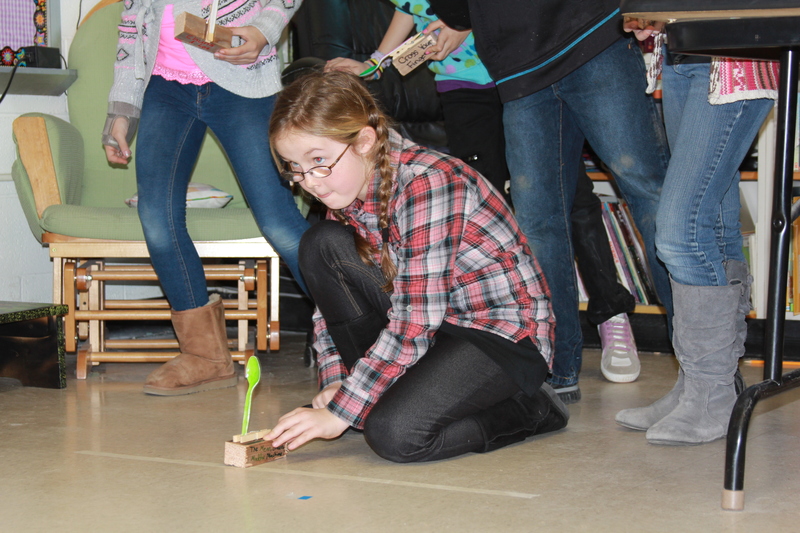Ten-year-old Jayden Lesko remembers making her first Punkin Chunkin machine with her grandfather.
"The little pumpkin went up and up and never came down," she said.
Using a clothespin, a spoon and a small block of wood, Lesko and other students in Hannah Petterson's fourth-grade enrichment group used their creativity and some engineering skills to put together their own machines Jan. 24.
Instead of pumpkins, it was cotton balls that went sailing across the classroom.
"What I really liked to hear was at least three students said, 'Oh, Mrs. Petterson, I have new ideas for a machine,'" Petterson said.
The class is learning about machines and what they do. As a special treat they heard Lewes author Eileen Baker read her children's book about Sussex County's annual Punkin Chunkin event. Appropriately titled "Chunkin' Punkins," Baker said she's sold 2,040 books through local bookstores Kids Ketch and Browseabout Books, as well as from her website www.pilottownpublishing.com.
Students were very familiar with the popular event as they shared their own stories about it.
"There's a net behind the machines when they shoot off because sometimes the pumpkins fly back into the crowd," said Cammie Baldwin.
The 18 students are part of a Science, Technology, Engineering and Math class that emphasizes practical uses of those studies commonly referred to as STEM.
Each of the students put their cotton-flinging machines together with the help of Petterson's hot glue gun, and in some cases rubberbands. They also decorated and named the machines.
"I named mine The Flamer," said Samual Robinson as he colored orange and yellow flames on one side, and blue and green on the other.
Students used part of a class period to design their machines before they got the chance to test them out in competition.
The most popular design by far was one with the spoon lying flat on top of a clothespin which were all glued parallel to a block of wood.
Cotton balls flew high, straight up in the air, but didn't cover much ground with that design.
When Maddie Betts took the starting line with her spoon attached straight up and perpendicular to the block of word, it was a game changer.
With her Mean Green Maddie Machine, her cotton ball traveled more than 10 times farther than the nearest shot.
How did she do it?
"I tested it out, and it worked," she said, modestly.
Her distance looked like the clear winner until the very last competitor stepped to the line.
Using the same vertical spoon design, Anna Stancofski aimed the cotton ball in her Chunking Chunker and let it fly.
The class exploded as her cotton beat Maddie's by a couple of centimeters.
"When I saw Maddie's go so far, I knew I had a chance," Anna said with a big smile. "That was a lot of fun."
Engineering comes to classrooms
Shields fourth-graders were studying a unit called "Marvelous Machines: Making Work Easier," developed by Engineering is Elementary, a research-backed curriculum for primary school students developed by the Museum of Science, Boston. Engineering is Elementary is one of numerous new programs designed to bring educators and engineers together to develop new ways of teaching and fostering engineering.
Melissa Steele is a staff writer covering the state Legislature, government and police. Her newspaper career spans more than 30 years and includes working for the Delaware State News, Burlington County Times, The News Journal, Dover Post and Milford Beacon before coming to the Cape Gazette in 2012. Her work has received numerous awards, most notably a Pulitzer Prize-adjudicated investigative piece, and a runner-up for the MDDC James S. Keat Freedom of Information Award.
























































